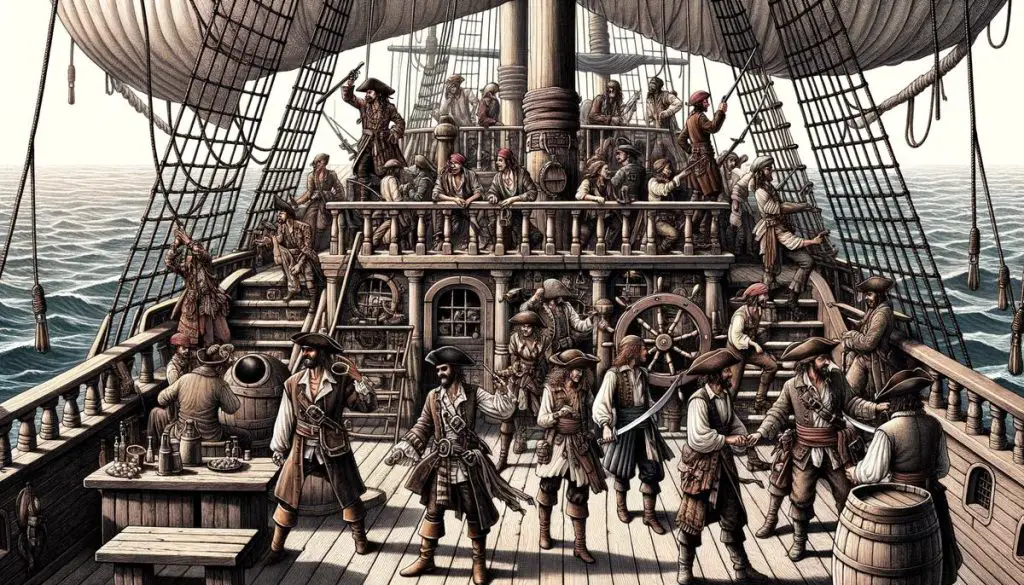Unveiling the Mysteries: Amazing Pirate Facts Revealed
Pirates have a distinctive image in popular culture, complete with unique accents and clothing. But how much of this portrayal is based on historical fact, and how much has been influenced by storytellers and filmmakers? This article explores these questions, examining the origins of pirate stereotypes and separating myth from reality.
The Pirate Accent: A Hollywood Invention
The iconic pirate speak, featuring “Arrr” and phrases like “Shiver me timbers,” largely stems from actor Robert Newton’s portrayal of Long John Silver in the 1950 Disney adaptation of Robert Louis Stevenson’s “Treasure Island.” Newton, from southwest England, gave his character the distinct accent of his native West Country dialect. This choice would establish the pirate accent in popular culture, shaping our perception of pirates in fiction.
In reality, pirates likely sounded similar to other sailors of their era. Their language was as diverse as their crew members, who came from various nationalities and backgrounds. English, French, Dutch, Spanish – the languages and dialects on a pirate ship were as varied as the colors of the sea.
Every September 19th, International Talk Like a Pirate Day encourages us to embrace pirate lingo with enthusiasm. It’s a day when the line between fact and fiction blurs, allowing us to enter a world where every sentence ends with “Arrr.” This fascination with pirate speak, inspired by Newton’s performance and Stevenson’s literary world, shows our appreciation for the adventure we associate with pirates, even if it isn’t historically accurate.
The actual pirate vocabulary, filled with nautical terms and diverse influences, was likely more complex and varied than popular culture suggests. But that doesn’t stop us from enjoying the myth and the fun it brings to our imagination.

Pirate Fun Facts Quiz
Welcome to the Pirate Quiz!
Answer the following questions to test your knowledge of pirate facts.
Pirate Fashion: Beyond Peg Legs and Eye Patches
Pirate ships were indeed scenes of intense battles and unfortunate accidents. Sword slashes and cannon fire didn't discriminate, leading to injuries among these daring sailors. Pirates faced the harsh reality of lost limbs. National Geographic suggests that life aboard these rogue vessels wasn't just about navigation and treasure hunting; surviving a battle often meant coming away with fewer body parts than one started with.1 To make these tough lifestyles more bearable, makeshift prosthetics, such as wooden peg legs, became a grim but intriguing aspect of pirate lore.
However, not every pirate had an eye patch or a wooden leg. These iconic features are more prevalent in literature and film than in historical accounts. Stories often exaggerate rare occurrences, leading us to believe that eye patches and wooden legs were more common than they might have been.
The idea of pirates wearing eye patches as part of their seafaring attire does have a practical basis. Sensation and Perception by E. Bruce Goldstein suggests that eye patches were used to preserve one eye's adjusted vision to the dark.2 Moving from the bright sunlight on deck to the darker areas below could be challenging during a fight or while sneaking below for a drink. An eye patch, then, wasn't just for show or the result of an injury, it was a clever tool to quickly adapt to different lighting conditions.
The realities of pirate life are woven through tales of adventure, including truths that differ from our grand portrayals of these sea rogues. While exciting action scenes depict eye-patched, peg-legged sailors navigating dangerous waters, the actual prevalence of such items among pirate crews reflects a combination of necessity, accident, and perhaps a bit of flair ensured by storytelling tradition. The life of a pirate was as unpredictable as the sea itself, filled with risks that sometimes required the use of such memorable aids.

- Why did nobody want to play cards with the pirate? Because he was standing on the deck!
- What's a pirate's favourite letter? Most would say "Arrr," but a true pirate's first love is the C!
- Pickering D. Did Pirates Really Say "Arr"? National Geographic. September 19, 2014.
- Goldstein EB. Sensation and Perception. Cengage Learning; 2009.

